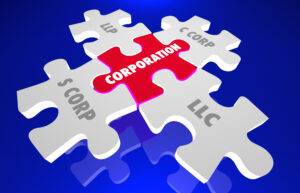10 Common Tax Filing Mistakes

As this year’s tax deadline approaches, we though it would be a good idea to share 10 common filing mistakes. The American Institute of Certified Public Accountants (AICPA) reminds taxpayers of 10 of the most common mistakes made each year by individual taxpayers on their federal tax returns. These avoidable errors can affect your tax bill, delay the processing of your return and draw the attention of the Internal Revenue Service.
Mistake #6: Failing to Document Charitable Donations
For charitable donations of $250 or more, written acknowledgment from the charity is required. A canceled check is not sufficient. If your gift was one of property rather than cash, the acknowledgment must describe the property. When your noncash contribution exceeds $500, you also are required to file IRS Form 8283, Noncash Charitable Contributions, giving details of the donation.
Mistake #7: Omitting Social Security Numbers of Dependents
You MUST include on your return the Social Security number for all dependents. Also, to claim a child or dependent care credit, you must complete Form 2441 and indicate the care giver’s name, address and taxpayer identification or Social Security number.
Mistake #8: Making Math Miscalculations When Filing
Review your return to make sure that your math is correct. If you find a mistake, remember to recalculate other figures that are affected by the error.
Mistake #9: Failing to Calculate the Alternative Minimum Tax (AMT)
With every passing year more and more taxpayers discover, often to their great surprise, that they are subject to the alternative minimum tax (AMT). But many of the 16 million taxpayers who are predicted to become subject to the AMT for the first time over the next two years will not fill out the AMT form 6251 because they think it is only applicable to the very wealthiest individuals and couldn’t possibly apply to them. The result can be a nasty note from the IRS informing them they owe more money and, of course, interest on the underpayment.
Mistake #10: Assuming Itemizing Deductions Will Reduce Tax Bite the Most
Many taxpayers assume that itemizing deductions is going to result in the lowest federal obligation. However, that may not be true. For example, if you’ve paid down most of the interest on your home mortgage, which is the largest deduction most filers have, you may be better off taking the standard deduction. The standard deduction increases each year because it’s indexed for inflation. For 2006 returns, the standard deduction for married taxpayers filing jointly is $10,300, and for single it is $5,150.

We hope you found this article about “10 Common Tax Filing Mistakes” helpful. If you have questions or need expert tax or family office advice that’s refreshingly objective (we never sell investments), please contact us or visit our Family office page or our website at www.GROCO.com. Unfortunately, we no longer give advice to other tax professionals gratis.
To receive our free newsletter, contact us here.
Subscribe to our YouTube Channel for more updates.
Considerately yours,
GROCO, GROCO Tax, GROCO Technology, GROCO Advisory Services, GROCO Consulting Services, GROCO Relationship Services, GROCO Consulting/Advisory Services, GROCO Family Office Wealth, and GROCO Family Office Services.

Alan L. Olsen, CPA, Wikipedia Bio

Proud sponsor of the AD Show.

Tax S-corporation
Saving Taxes with an S Corporation An S corporation election allows the shareholders to preserve the benefit of limited liability for the corporate form while at the same time being treated as partners for federal income tax purposes. Ever wondered why so many small businesses operate as an S corporation? Simple. An S corporation saves…
Sec1045 Partnerships
Sec1045 Partnerships This document contains final regulations relating to the application of section 1045 of the Internal Revenue Code (Code) to partnerships and their partners. These regulations provide rules regarding the deferral of gain on a partnership’s sale of qualified small business stock (QSB stock) and a partner’s sale of QSB stock distributed by a…
Sec179 Businessequipment
Updated: 11/12/10 Most new business equipment can be either depreciated over its useful life or expensed immediately under Internal Revenue Code Section 179. The maximum deduction is based on the following schedule for the date in which the tax year begins. Each 1040, whether Single or Joint, is limited to one maximum. 179 expenses passed…
Sec1244 Small Business Stock Sales
Sec1244 Small Business Stock Sales Section 1244 of the Internal Revenue Code, the small business stock provision, was enacted to allow shareholders of domestic small business corporations to deduct as ordinary losses, losses sustained when they dispose of their small business stock. In order to receive this beneficial treatment, the Code prescribes specific requirements for:…



